The Basics of Cycling Nutrition: What To Eat, When, & Why
Learn the basics about cycling nutrition so you can improve your performance out on the road or trail. Learn what to eat, when, & more!
When I was getting my Master’s degree in nutrition, one of my top interests was sports nutrition. While I didn’t ultimately choose a career as a dietitian, I’m still fascinated by how food is converted to energy that we can then use to fuel our adventures – like biking!
For two-wheeled enthusiasts like me, having a good understanding of cycling nutrition is an essential key to not only making it through a ride but also having fun along the way.
I’m sure we’ve all felt the unfortunate effects of bonking on the road or trail when we don’t eat enough. Not fun, right?
And it’s not just during a bike ride that we need good nutrition. How we eat on a daily basis and what we consume post-ride matter too. So as a mountain biker, a (mostly) healthy eater, and a nutritionist, I wanted to help you properly fuel your rides by putting together this guide on simple nutrition tips and ideas for bikers and cyclists.
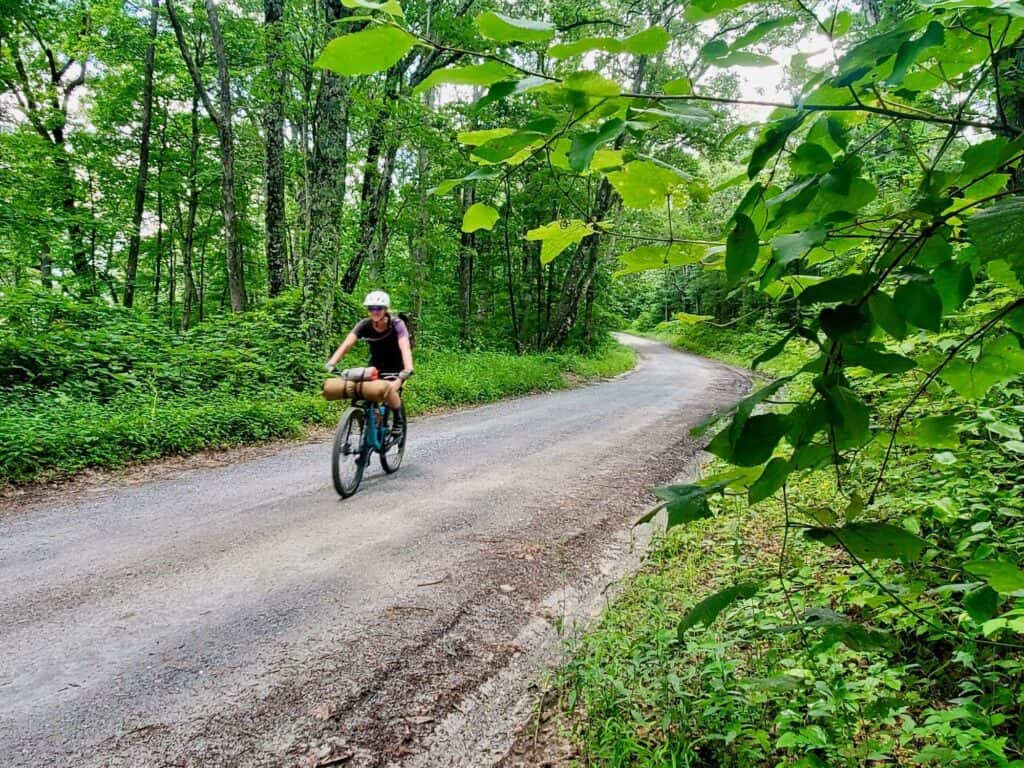
Need Help Planning Your Trip?
New to bikepacking? I’d love to help you plan your first (or next) overnight trip! Click the link below to set up a Q & A session.
It all starts with a healthy diet
You’ve probably heard this before, but performance really does start with a healthy diet. There’s no one ‘right’ healthy diet, but here are a few tips and nutritional frameworks to help you get started.
Follow the 80/20 rule (or count macros)
Eating well during a ride isn’t going to do you much good if you don’t have overall healthy eating habits to begin with.
I am a strong believer in the 80/20 rule where 80% of your diet is filled with healthy stuff like fruits, vegetables, whole grains, unprocessed meats, sugar-free dairy, nuts, etc…
The remaining 20% of your diet can include more processed items like chocolate, bread, ice cream (my fave!), and other ‘less healthy’ favorites.
If you are looking for a bit more structure when it comes to creating a healthy diet, I recommend macro counting. This still allows you to eat your favorite foods and doesn’t limit anything, but it keeps your macros – which are fats, carbs, and protein – in a healthy ratio so you’re not overdoing it on protein and skimping on carbs (which, you’ll learn below, are essential for maintaining energy. Carbs are good!)
I really like Julie Ledbetter for her workout app, but she’s also a proponent of macro counting and has a lot of information on her website and a free ebook you can download.
Find what works for you
It’s important to keep in mind that there is no one right way to eat healthily. Some people thrive on a lower-carb, high-protein diet while others do better on a higher carbohydrate intake diet. Experiment and see what works best for you.
I will say that if you’re a cyclist going out for long, aerobic rides, you will be better off with a higher percentage of carbs in your diet because our body’s primary fuel during exercise is sugar – aka carbs. I’ll dive more into this below.
Avoid quick fixes
What you want to avoid are fad diets including the keto diet and paleo diet. “Diets” usually promise quick weight loss, rapid muscle gain, increased energy, etc… but the truth is that most of these diets are not sustainable and many of them are not healthy.
Are you willing to give up pasta for the rest of your life to follow a no-carb diet? I’m definitely not!
It’s better to find a mostly healthy eating plan that works for you and that you can follow indefinitely. Don’t get sucked into quick fixes or diets that promise rapid changes.
Cycling nutrition basics
Alright, let’s get into the basics of what you should prioritize eating pre-, during, and post-ride.
Keep in mind that this information is not meant for competitive athletes. If you want a more in-depth dive into sports nutrition, I highly recommend the book Advanced Sports Nutrition by Dan Bernadot. It’s very well-written, easy to understand, and has everything you could possibly want to know about sports nutrition and fine-tuning your diet for optimal performance.
Pre-ride nutrition
If you eat a mostly healthy diet full of complex carbohydrates, healthy fats, and unprocessed proteins you shouldn’t really need to focus on any pre-ride nutrition or supplements. It’s better to focus on eating during your ride and post-ride recovery.
That being said, it’s probably not the best idea to eat a big meal or something particularly high in fat or protein right before you head out.
Both fat and protein are slower to digest than carbs and can leave you feeling sluggish.
If you know you will be heading out for a big effort ride, eating or drinking easy-to-digest carbohydrates about 30 minutes before you start can help keep blood glucose levels high early on in your ride.
What to eat during a ride
This is where focusing on cycling nutrition gets important.
Your body stores carbohydrates in your liver and muscles. This stored energy is called glycogen and it’s what your body primarily uses as fuel during exercise to keep you upright and pedaling.
When your liver glycogen and muscle glycogen stores are depleted and you haven’t eaten any carbohydrates to turn into energy, you bonk. We all know that feeling and it’s really not very fun.
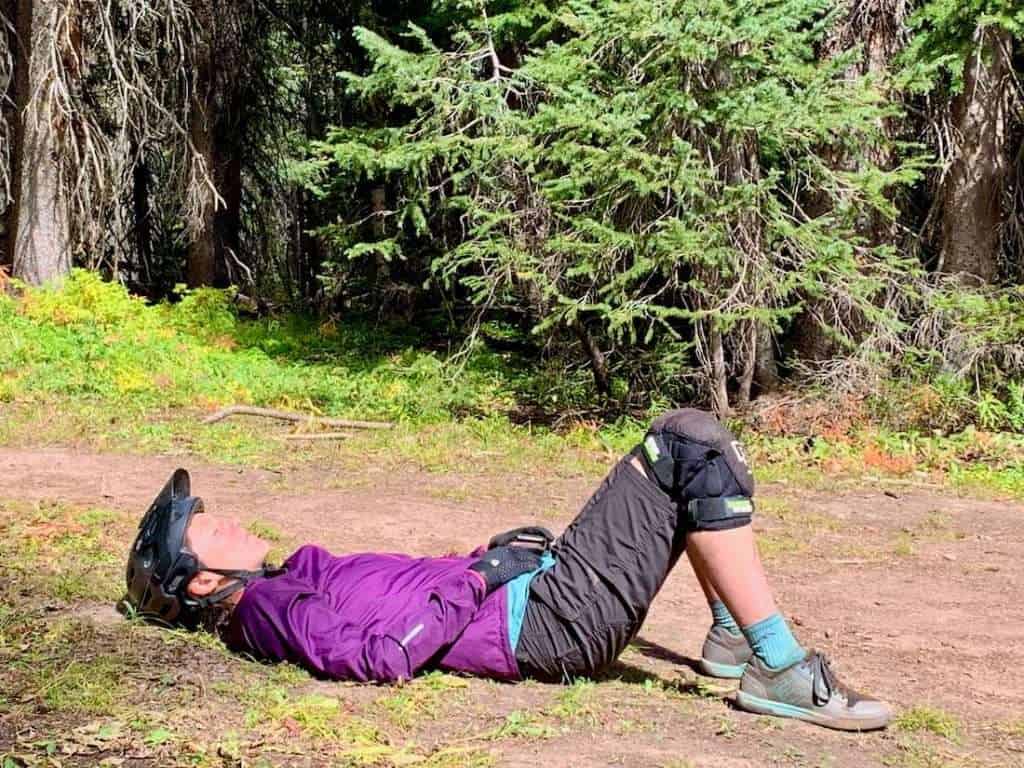
Luckily, sugar (aka carbs) isn’t the only way our bodies can produce energy, but it is the fastest and most efficient way. We can also use stored fat as energy (yay!), however, higher glycogen stores improve the body’s ability to metabolize fat. So if you’re glycogen stores are already depleted, it’s going to be harder for your body to metabolize fat stores.
The solution? Eat carbohydrates while you ride.
High-intensity cycling, like road cyclists doing sprints, will use up glycogen stores and blood sugar faster while lower-intensity and endurance athletes will use a combination of fat and carbs.
- High-intensity rides = your body will use glycogen stores and blood sugar faster, which results in lower proportion of fat metabolism
- Low-intensity rides = your body will use a combination of fats and carbohydrates, which results in a higher proportion of fat metabolism.
So how much carbohydrates do you need to consume throughout the duration of a ride? That really depends on how hard you’re going, how long your ride is, and your individual metabolism among other factors.
But keep in mind that the longer and more intense your ride is, the more carbohydrates you need to consume.
If you feel like you bonk easily or you just don’t have enough energy on rides, try eating more carbohydrate-rich snacks like energy bars or dried fruit.
Carbohydrate-packed snack ideas:
Unlike ‘normal’ eating, fueling your body with simple and easy-to-digest carbohydrates during exercise can actually be beneficial since simple carbs (i.e. sugar) are digested and absorbed into your bloodstream faster.
This will help reduce the rate at which your glycogen stores are depleted and keep your blood sugar elevated so your body can turn that sugar into energy.
- Dried fruit
- Energy bars (I like Lara Bars and Bobo’s Bars because they have simple ingredients and a bit of protein as well)
- Hydration powder like Skratch or Tailwind. If I’m going on a longer ride (more than 2 hours) or it’s particularly hot out, I’ll bring a water bottle filled with Skratch or Tailwind, both of which contain a good amount of sugar. (Read more about hydration powders below).
- PB & J. Cut it up into fours so that you don’t eat the whole thing at once, which might cause discomfort.
- Energy blocks or chews like Skratch Sport Energy Chews or Clif Bloks
- Crackers
- Gels like Gu Energy Gels
- Anything high in carbs and low(ish) in protein and fats that you enjoy eating while in the saddle!
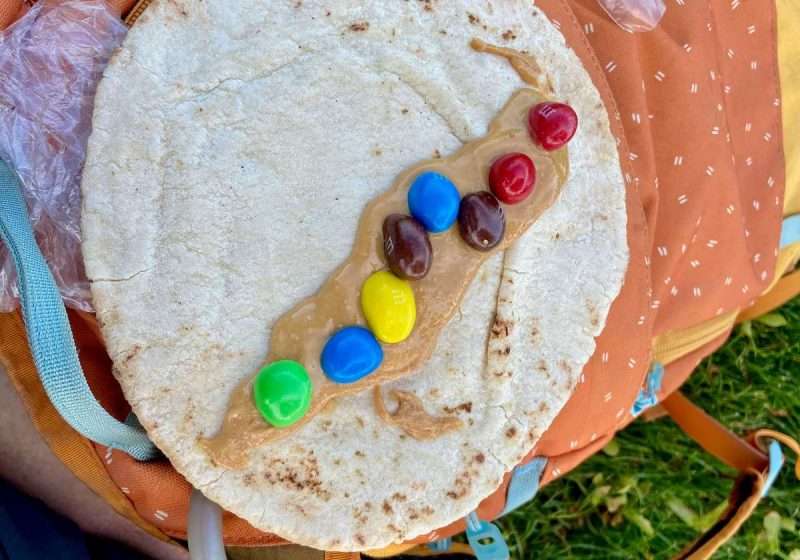
Post-ride nutrition
Post-ride cycling nutrition is actually a lot more important than many recreational riders think. After exercise, your body’s levels of glycogen synthase (the enzyme responsible for replenishing glycogen stores) are elevated. This means, the more carbs you consume right after riding, the better chance you have of replenishing your glycogen stores before tomorrow’s ride.
If your goal is fat-loss, remember that more glycogen stores improve your body’s ability to metabolize fat. So, wait for it, eating carbs can help you burn fat!
Now, don’t run off and guzzle a liter of soda. Unless you did a high-intensity or particularly long ride, you probably don’t need to consume more than a simple high-carb snack like a banana with peanut butter or a small serving of leftover pasta.
But if you did have a big, sweaty ride, you will benefit from some post-ride supplementation. I was recently turned onto Tailwind Recovery Mix by a friend and I have noticed a big difference in recovery time and post-ride soreness.
Tailwind is formulated with easy-to-absorb and digest carbs (in the form of sucrose and dextrose), as well as a complete protein profile, and essential electrolytes. I use one scoop after a medium-intensity ride and two scoops after a high-intensity ride. The chocolate flavor is delish and it’s vegan-friendly.
If you feel like your body is taking longer than it should to recover between rides, focus on eating and carb and protein-rich snack immediately post-ride so that you can take advantage of elevated glycogen synthase levels and aid in muscle recovery.
Carbohydrate & protein-rich post-ride snack ideas:
- Banana with peanut butter
- Pasta salad or quinoa salad
- Rice, beans, and sweet potato
- Scrambled eggs and toast
- Smoothie with yogurt or protein powder (A note about protein powders. I actually don’t like most protein powders because they:
- 1. Provide way more protein intake than we actually need and
- 2. They’re typically sweetened with artificial or zero-calorie sweeteners which I think are gross.
If you want to use a protein powder to boost your smoothies, I recommend going with a no-frills whey powder or straight-up pea protein powder.
- Fruit and yogurt parfait with granola
- Anything quick and easy to put together that provides a good dose of carbohydrates and a bit of protein
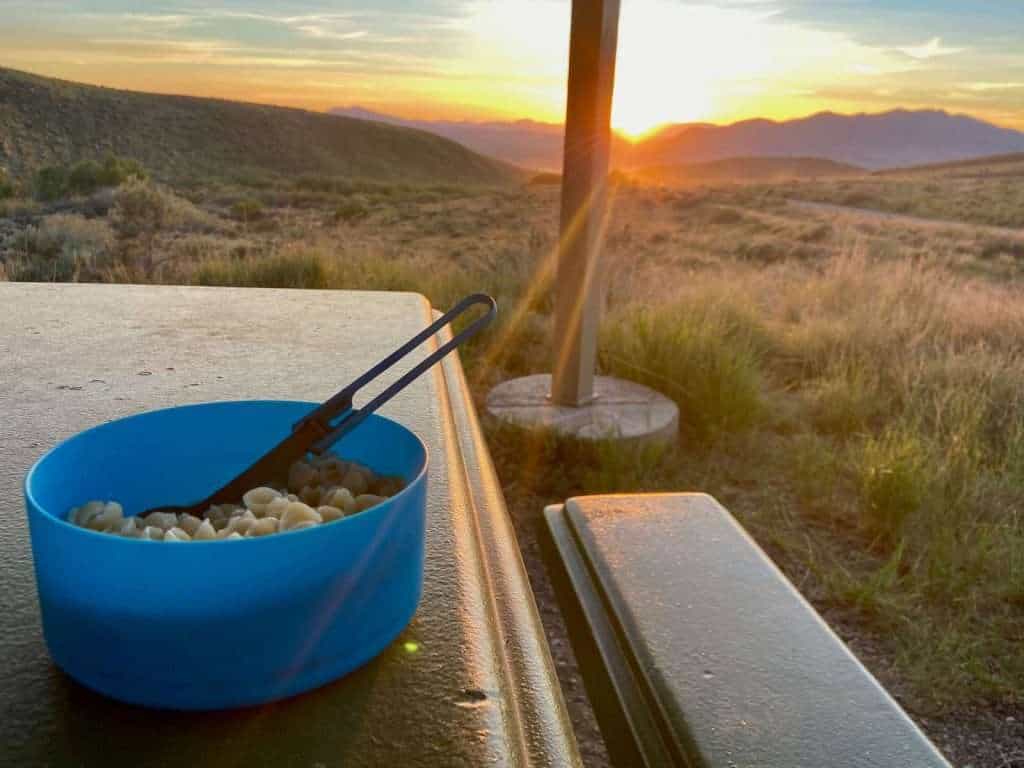
Cycling Hydration
Like all sports, it’s important to stay hydrated while biking or cycling. I always wear a hydration pack when I’m mountain biking and I’ll bring a water bottle or two if I’m on my road bike.
I find that taking small sips of water throughout my ride is better than guzzling a bunch of water at once.
So how much water do you need to drink while cycling? That depends on a number of factors like intensity, temperature, length of your ride, your individual make-up, and how well-hydrated you are before you head out.
It’s recommended to drink:
- Before: 17-20 oz. of water at least 2 hours prior to exercise
- During: 7-10 oz. of water for every 10-20 minutes of exercise (about .8 L per hour in normal temps for regular-intensity rides)
- After: 16-24 oz. of water for each pound lost due to sweating
Hydration powders & sports drinks
For most rides, a hydration powder or supplement isn’t really necessary. Drinking water and eating snacks to keep blood sugar levels steady are sufficient for preventing dehydration and keeping energy levels high.
That being said, hydration powders are a good idea if you are heading out on an extended ride and/or you expect to be sweating a lot. The most important ingredient in hydration powders is sodium – aka salt. When you sweat, you lose salt and other electrolytes. If they’re not replenished sufficiently, it can result in cramping, dizziness, and irregular heartbeat among other symptoms of dehydration.
In extreme cases, electrolyte depletion can lead to a life-threatening condition called hyponatremia where sodium levels in the blood are dangerously low.
For longer or sweatier rides, I like to carry a water bottle filled with Skratch hydration powder or Tailwind Endurance Fuel. Both of these hydration powders contain quite a bit of sugar (which, remember, we need!) and help keep blood sugar levels steady on long, hard rides without the need to stop and eat too often.
They also both contain good amounts of sodium and other electrolytes to replenish what is lost in sweat. I sweat a lot, so I feel like I need the extra salt!
What about beer?
I’m not a beer drinker, but I do like a nice, cold cider, especially after a big ride. Unfortunately, alcohol isn’t your friend when it comes to hydration (or recovery).
Alcohol is a diuretic, which impedes rehydration efforts and since alcohol is metabolized in the liver, it also impairs glycogen replenishment among a host of other windfalls.
I’m not saying you need to be a saint and cut out all alcohol, but it’s probably best not to drink immediately after a ride to give your body a chance to rehydrate and replenish nutrients.
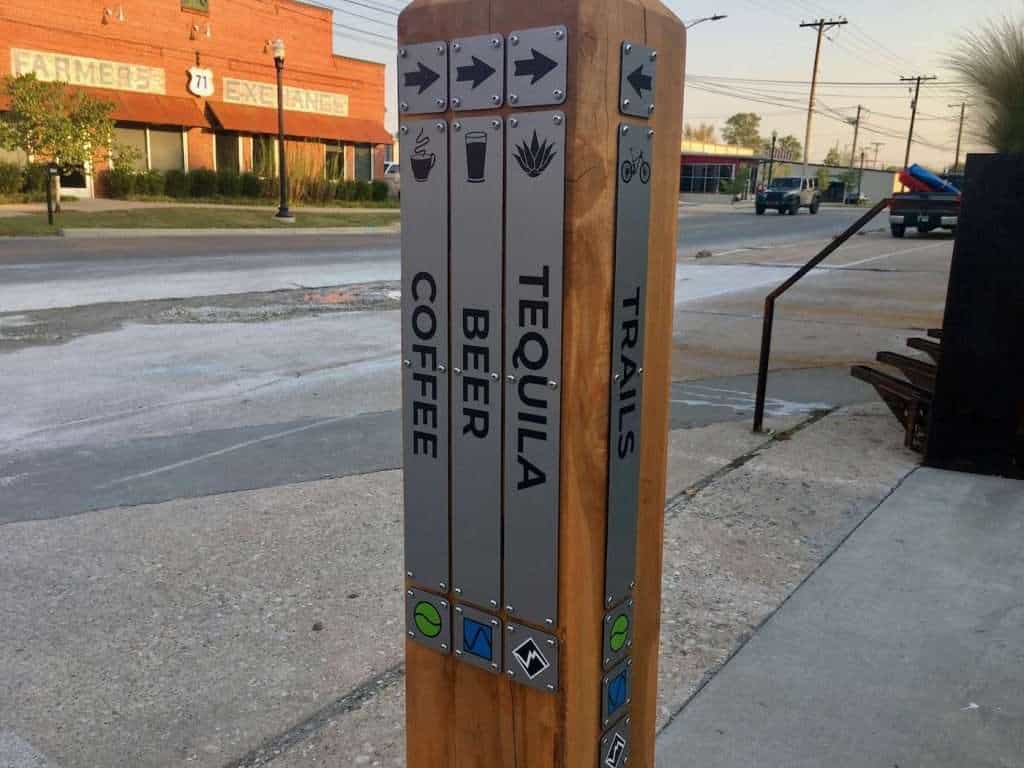
Supplements for cyclists
Honestly, I’m not a huge fan of supplements or ‘performance enhancers’. For one, the supplement industry is a multi-billion dollar industry that is not well-regulated. Furthermore, companies really don’t need to prove that their supplements work or even that they’re safe. It’s shocking.
I think Dan Berandot says it best in his sports nutrition book:
“There is no ergonomic aid that is a substitute for proper fluid intake, a solid nutrition intake, an appropriate training regimen, and sufficient rest.”
Dan Berandot, Sports Dietitian
But that being said, there are a few supplements that I use that I feel make a difference for me. Two of them I’ve mentioned already.
Multivitamin
I do notice a difference in energy, sleep, and recovery when I take a multivitamin. I’m not a proponent for everyone taking a multivitamin because I think that a healthy diet should provide the body with everything it needs, but as I said above, I do notice a difference when I take them, so I’m including it here.
Multivitamins typically include a full panel of vitamins and minerals, which you may or may not need. Most multivitamins are packed with WAY more than your body actually requires, so I typically only take one capsule a day versus the recommended two.
Multivitamins are a much bigger topic than I want to go into here, but if you’re feeling like you’re lacking energy and your diet is mostly healthy (remember the 80/20 rule!) and you’re eating/drinking carbohydrates before and after you ride then you may want to try adding a multivitamin to your routine.
Not all multivitamins are created equal, though. Stay away from gummies and anything with added colors, artificial flavors, or anything ‘fake’. You also want to look for B-12 in the form of methylcobalamin, which is better absorbed by our bodies and signifies a higher-quality product.
Hydration powder
Having a hydration reservoir or water bottle filled with a hydration powder mix can be a lifesaver on long rides or particularly sweaty days. I sweat a lot and I notice a BIG difference when I have a hydration powder mix to sip on.
Hydration powders (should) provide a mix of carbohydrates to keep your blood sugars steady and replace electrolytes that are lost in sweat like sodium, magnesium, potassium, and calcium. Calcium isn’t just needed for your bones, it’s also required for muscle contractions!
Skratch Labs and Tailwind Nutrition are both good options. They have about the same amount of carbohydrates per scoop, but they differ slightly in the amount of electrolytes they contain.
Recovery powder
I only recently started using the Tailwind Recovery powder as part of my cycling nutrition strategy thanks to the recommendation of a friend and honestly, I notice a difference.
I’ve never been a bit supporter of protein powders because they always taste terrible and most people get enough protein in their diet as it is. That being said, if I drink a scoop or two of this stuff mixed with water after a ride, I feel much better recovered the next day.
Tailwind Recovery provides a cocktail of easily digestible carbs, complete proteins, and electrolytes. Remember, post-exercise is a super-sensitive time for your body since glycogen synthase levels are elevated and your body is looking for carbs to replenish glycogen stores and protein to aid in muscle recovery.
Caffeine
Caffeine is really the only ergogenic aid that has been shown to improve or enhance athletic performance, which is why you’ll see some bars, gels, and chews with caffeine.
Caffeine use should be used with caution, though, because it is a diuretic and some athletes may be particularly sensitive to it.
Sports nutrition resources
If you’re interested in learning more about cycling nutrition, here are a few of my favorite resources.
Nutrition Science Books
- Advanced Sports Nutrition – This was my favorite sports nutrition book I used during my master’s program. It goes into a lot of detail about how the body processes and uses fuel and how you can optimize your diet for better performance. It is a textbook, though, so be prepared to get into the nitty gritty details of nutrition.
- Sports Nutrition for Young Adults – If you have a kid who is interested in cycling nutrition, this book is a great resource. It includes a detailed overview of the nutritional needs of young athletes as well as tasty recipes including a homemade sports drink.
Cookbooks & Recipes
- The Feed Zone – The Feed Zone is actually a cookbook put out by the founder of Skratch Labs. It includes a ton of great recipes from energy-packed breakfasts to recovery meals and much more. All of the recipes are delicious, simple, and nutritious.
- Feed Zone Portables – A second book published by the founder of Skratch Labs, this one includes dozens of recipes for easy, portable snacks and meals. No more endless monotony of bars and gels that cyclists typically devour!
- Fuel Your Body: How to Cook and Eat for Peak Performance – Written by a Registered Dietitian specializing in sports nutrition, this cookbook is chock full of delicious, whole foods-based, and energy-packed recipes. She includes a ton of substitutions in her recipes, so it’s great for everyone whether you’re gluten-free, vegetarian, or other.
- Half Baked Harvest Super Simple – This isn’t a sports nutrition cookbook per se, but I included it because Teighan Gerard of the recipe blog Half Baked Harvest is by far my favorite recipe developer. Her dishes are amazing and most of them are healthy and whole-foods based.
RELATED POSTS
Looking for more tips on how to improve your riding or boost your performance? Check out these related blog posts:
What questions do you still have about cycling nutrition? What tips or advice would you give to someone who wants to improve their diet or eating habits? Leave a comment below!

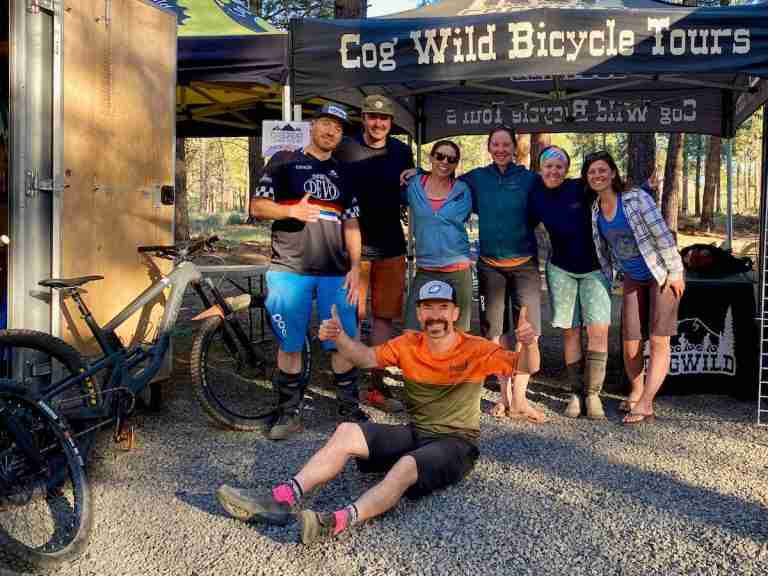
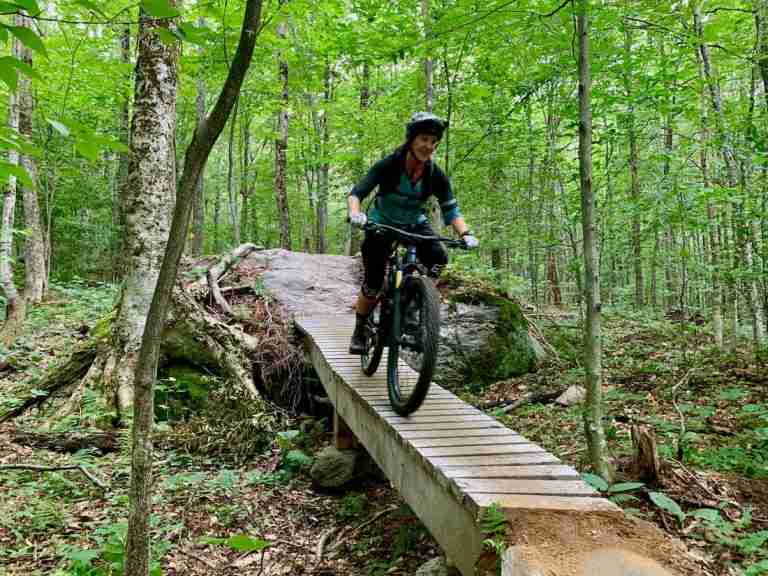
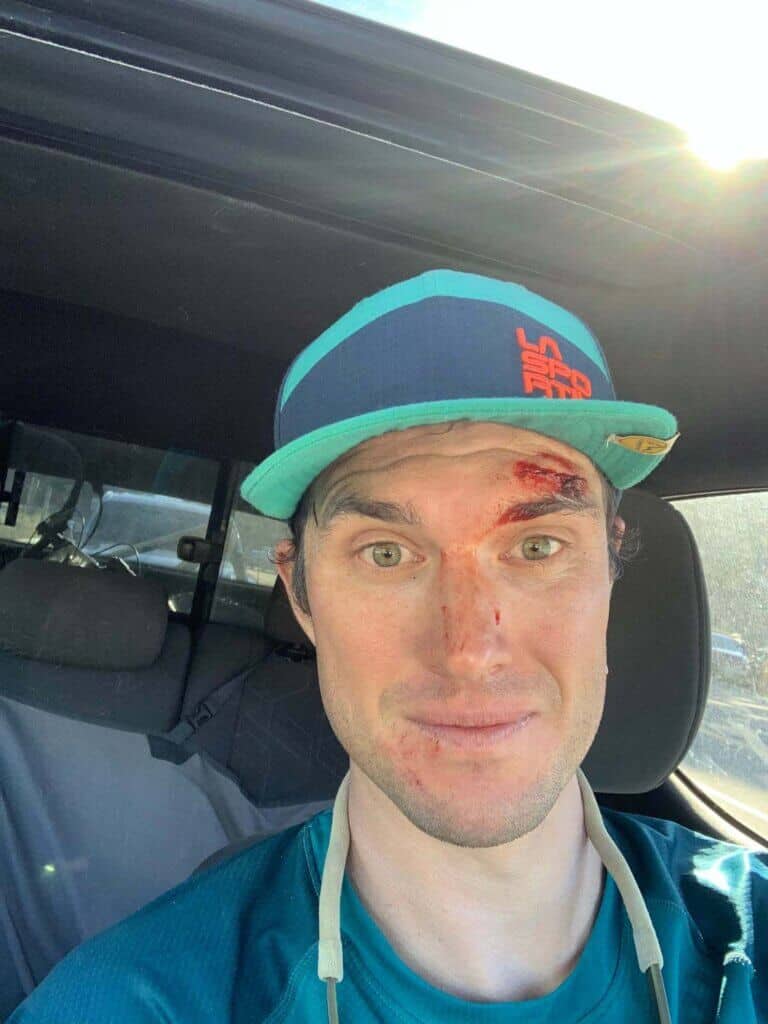
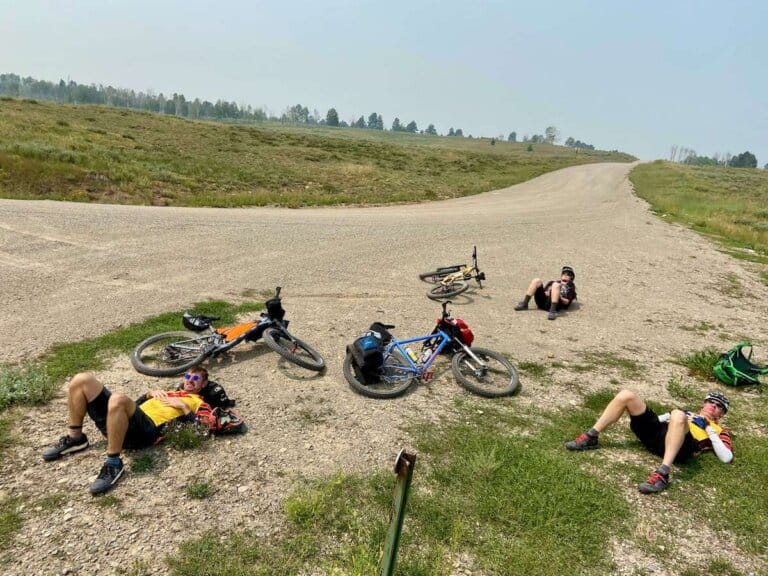
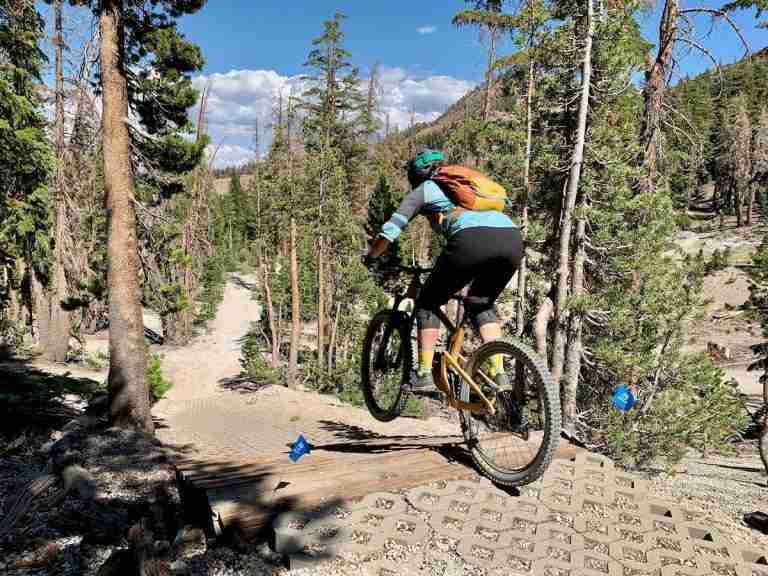
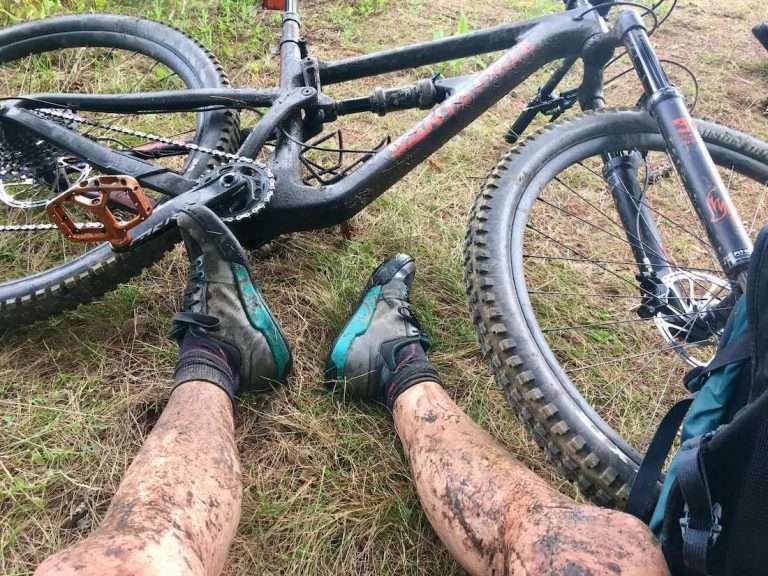
I love hearing from you and appreciate your comments! However, if you leave a rude, unconstructive, or spammy comment, it will be deleted. It’s cool to be kind. Have an awesome day!